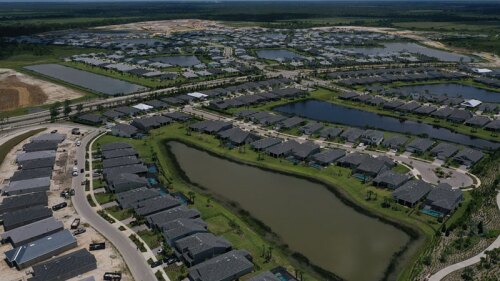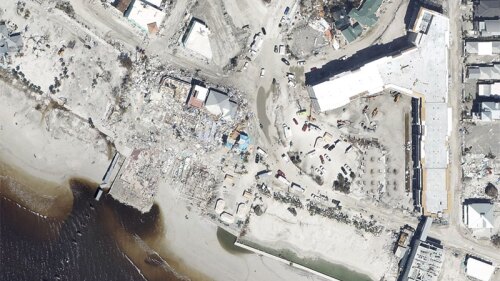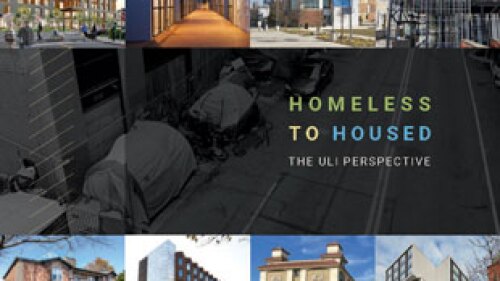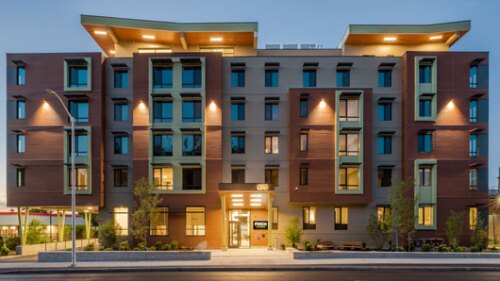Powered by diversified markets that include technology, shipping, and agriculture, the Golden State’s real estate industry appears to be on the upswing.
With the economic recovery and loosening of the credit markets, development in California is gradually picking up, says Bob Gray, a partner at Rockwood Capital in San Francisco. “The bright spots for the state’s economy are largely driven by technology-related job growth,” he says. “Housing, finance, and insurance have likely bottomed, but job growth has been minimal and we are not in a full recovery mode yet. Only developers/sponsors with strong track records and balance sheets with the ability to provide completion guarantees will get their projects off the ground.”
Capital available for existing and proposed transactions—both debt and equity—has increased significantly, says Brian Corrigan, senior vice president in the Newport Beach office of CBRE. “Real returns are expected to increase and borrowing rates remain at low levels,” he says. “Barriers to entry enhance the opportunities, and the vast diversity of industries spreads capital risk. Rates are anticipated to remain low for the foreseeable future, with increasing players entering the major markets within California. The secondary markets are not as robust as the primary markets from a demand perspective, but activity is increasing.”
The Golden State is experiencing increased real estate activity in the health care, office, and retail sectors, says Rick Choate, principal of the parking planning and design firm Choate Parking Consultants in Irvine, and a member of the Parking Consultant’s Council and the National Council of Architectural Registration Boards. “We are seeing activity in health care, including the master planning for entirely new health care campuses,” Choate says. “We are working with several manufacturing owner/developers in the health care industry, as well as developing parking for hospital and medical office facilities. We have also noticed an increase in commercial office campus planning and some limited retail development.”
Thomas F. Harrison, principal of Santa Monica–based Colony Capital, says the state’s real estate business remains dynamic, with pockets of strength that reflect a diverse array of industries that lead the world in agriculture, biotech, defense technology, university research, and technology.
A Housing Quickening
Attracting the attention of many investors is the opportunity to capture good value on single-family homes at or near the bottom of the cycle. “The absorption of this shadow inventory disgorged by banks and the government-sponsored enterprises [Fannie Mae and Freddie Mac] is providing the potential for the creation of a new asset class of institutionally managed single-family homes,” Harrison says. “Colony has invested in this cycle in ground-up development of multifamily residential units with a successful southern California multifamily developer.”
In southern California, a real desire exists to develop residential space in A-plus locations, preferably near the coast, says Dan R. Withee, a partner at Torrance-based Withee Malcolm Architects. “Developing anywhere other than a prime location means real difficulty in getting equity to invest,” he says. “Also, apartment real estate investment trusts [REITs] are aggressively chasing deals in the 125–500 unit size—again, in A-plus locations.”
Infill sites near transit stops are in high demand for multifamily developments in the Los Angeles area, especially along the Metro Expo Line and the light-rail line serving Koreatown and Hollywood, Withee says. The preferred products are mid-rise, four- to six-story wood-frame multifamily housing—built either over a podium in high-rent locations or in “wrap” projects that incorporate an on-grade parking garage surrounded by on-grade multistory apartments—as well as walk-up garden-style apartments with on-grade parking in more moderate-rent locations, he says.
For-sale developers are looking at infill sites where they can build two- or three-story townhouses or small-lot, detached units. “Most of these projects are relatively small or are built in small phases due to absorption [rates] and risk in the market,” Withee adds. “Plans tend to be open and spaces need to be flexible as well as entertaining. Small-lot detached sites in L.A.—where you can build individual fee-simple homes five inches apart without a homeowners association—are in high demand as well.”
The outlook for for-sale housing in the region is improving, says Rick Fletcher, vice president of sales and marketing at Irvine-based MBK Homes. MBK, which focuses on entry-level and first move-up housing, recently completed 1600 at Artesia Square, an urban live/work community in the Los Angeles South Bay area. “Demand is fairly strong, inventory is low, and sales absorption is improving,” he says. “Buyer confidence is up, and the hope is pricing has stabilized in the A locations.”
Multigenerational living is also becoming more attractive in the state, providing new real estate opportunities, says Laura Archuleta, president of Irvine-based Jamboree Housing Corp. Jamboree’s $21.3 million, 75-unit Courier Place Apartment Homes in Claremont opened earlier this year. “It’s because of the popularity of extended families with immigrant populations; the current recession, which has led to family members doubling up; and the increasing number of senior adults who remain at home with the support of family and friends rather than moving to a more institutional care setting,” says Archuleta. “Courier Place is designed for families and seniors, each with their own specially designed buildings and amenities.”
Sustainable development continues to be a key element in southern California real estate. In Marina del Rey, privately owned Sunbrook Partners transformed a project that had been vacant for 12 months into Latitude 33, a residential community offering three distinct collections of homes. “The biggest challenge we faced was taking a prominent project within a close-knit community that had been sitting unoccupied for a year in the midst of the economic downturn and bringing new life to it by creating a modern, beach residential community,” says Amber Turner, director of sales and marketing at Sunbrook Partners. “Having to modify the existing elements into a new fresh look versus starting from the beginning added design constraints and costs. In this difficult market, this mixed-use community is bucking trends and is selling very well.”
Plans for new developments in southern California are also proceeding because Orange County and Los Angeles have a broad economic base that is growing and diverse, putting the area at less risk of setbacks in a single sector, says Sean O’Malley, principal of SWA Group, a Sausalito-based international landscape architecture and planning firm. The region’s strengths are technology and innovation firms, but also manufacturing—everything from furniture to airplanes and aerospace systems—the entertainment industry, and import/export services, he says.
SWA recently started early planning for a 6,000-acre (2,400 ha) housing community in southern California. “Essentially, we’ve been asked to help create a new town, with housing, schools, a hospital, and supporting retail, with a mix of single-family and higher-density housing, because of the demand from younger workers and aging baby boomers,” says O’Malley. “People want to walk to schools and shopping along pedestrian trails with natural systems and animal habitat nearby. It’s a dramatic shift from the car-centric master-planned communities of the 1950s.”
Southern California is seeing work begin on a number of projects, says Marty McPhee, executive vice president of sales and marketing at Park West Landscape in Rancho Santa Margarita. Among these are the Newport Beach Civic Center, a development that includes a 17,000-square-foot (1,600 sq m) expansion of the Newport Beach Central Library, creation of the community’s fifth-largest park, and a new city hall office building. Park West Landscape is working on the project with landscape architects Peter Walker & Partners (PWP), says McPhee; it is expected to be completed later this year. Park West Landscape also recently finished working in Pasadena with landscape architect Todd Bennitt of Bennitt Design Group on the Robert and Mary Galvin Physics Forest at the Kidspace Children’s Museum, which opened in July.
“Increased affordability, low vacancy rates, and declining numbers of distressed properties continue to set the stage for a boost in southern California’s real estate market,” says John Andrews, economic development director for the city of Ontario’s Economic Development Agency. “On the commercial side, positive employment trends, incomes, and demand for goods and services are helping to increase occupancy activity for commercial and industrial properties. While challenges remain, there are signs that Ontario and the Inland Empire region are poised for a turnaround.”
In Ontario, preliminary planning has begun for a new three-story office building in the downtown Euclid Avenue District, says Andrews. “This project will complement the recently completed Ontario Town Square residential project and City Center Senior Apartments,” he adds. Hofer Ranch, being developed by Hillwood on one of the last large contiguous parcels of industrial land in Ontario, has permits to move forward on the next phase of the development of a multitenant logistics facility that will offer over 1 million square feet (93,000 sq m) of space, he says. These projects are complemented by the Ontario Mills shopping mall expansion and renovation, which began in 2011 and continues with the second phase this year.
Development in southern California is triggering a need for increased parking, says Rick Choate. Choate Parking Consultants is completing the Camp Pendleton Hospital parking facility as well as parking facilities for the Los Angeles Community College District campus and several commercial office developments in the Irvine area. There is a trend toward greater densities with Class A office space, Choate notes. “What makes this more critical is in the past, Class A office was typically a lower density per square foot,” he explains. “Now there is a need to provide more parking to offset the increased population.”
Southern California’s industrial sector is also experiencing an upswing, says Barbara Emmons, vice chairman in the Los Angeles office of CBRE. “We are seeing land prices that equal peak markets,” she says. “We will see new development in 2012–2013 in most markets—although because of availability of land, it will be disciplined development. The majority of the industrial development is in bigger boxes, especially in the Inland Empire.” In particular, demand exists for new, larger Class A facilities of 500,000 square feet (46,000 sq m) or more for companies that are consolidating or expanding, she says.
CBRE is involved in new developments throughout southern California, Emmons says. Among these are a 484,000-square-foot (45,000 sq m) state-of-the-art cross-dock industrial building in Bell and a 300,000-square-foot (28,000 sq m) building in Chino to be built by Seal Beach–based Xebec Realty Partners. “There is demand for this product,” Emmons says. “In the Inland Empire we have numerous projects under way, and with the current industrial tenant demand, we expect many of these projects may be leased prior to completion of construction.”
Repurposing for a Changed Market
Like the southern region of the state, northern California is seeing its real estate development and design sector starting to turn around, says Lauri Moffet-Fehlberg, a partner in the Pleasanton–based architecture planning firm Dahlin Group. “It’s not a crazy run-up,” she emphasizes, “but the mood in the development industry is better than it has been for a while. It’s still cautious, but the feeling has changed from one of uncertainty to one of risk—and risk is something that can be managed. We’re seeing a lot of projects that were dormant coming back to life.”
The Bay Area is a bright spot for job growth, she adds, particularly in the South Bay and San Francisco Peninsula areas. “We’re seeing an increase of infill development projects as the economy adds jobs,” she says. “Multifamily is very strong. We’re also working on assisted living and multifamily renovations. We’re repositioning and repurposing projects that received entitlements five or six years ago, because they are no longer relevant to the marketplace. We’re seeing a tremendous amount of work in that segment.”
The Bay Area is probably one of the strongest real estate markets in the country right now, says O’Malley of SWA Group. “Clearly the technology sector is a main driver, led by technology, game design, and social media firms,” he says. “Homebuilders preparing for a single-family market rebound and multifamily developers who can’t build fast enough for today’s demand are spurring land sales. Land prices in desirable areas didn’t really fall that much in the downturn, so builders are still starting from a high cost basis before they turn a shovel. Buying is still very active for small, infill lots for apartments and condominiums that young, urban buyers demand.”
Multifamily development is strong in northern California, with a focus on the coastal regions, particularly on the western side of San Francisco Bay, due to robust job growth. McPhee says demand is strong for housing within commuting distance of major metropolitan areas in northern California. “We’re seeing a huge demand for housing in the San Francisco Bay area and Silicon Valley because of the high-tech industry,” he reports. “You have Apple and Google blasting off, so multifamily is becoming a big deal there. We’re also seeing a shift from the American dream of owning a detached home, particularly when buyers are faced with a two-hour commute.” Also spurring real estate development is the expansion of the Bay Area Rapid Transit (BART) system. “We’re noticing a lot of transit-oriented development around new BART stations,” McPhee says.
San Francisco’s central business district is also home to several major renovation projects. In March, Rockwood Capital and TMG Partners began renovating 680 Folsom Street, a 520,000-square-foot (48,000 sq m) property. The renovation is more than 80 percent pre-leased to Macys.com and Riverbed Technology.
As always, northern California’s real estate development industry centers on location, says Fred Blackwell, assistant city administrator for Oakland. “San Francisco is already experiencing a shortage of commercial space, and as a result we will likely see a small surge in commercial real estate development in Oakland, particularly as San Francisco’s South of Market area sees decreased vacancies and increased rents,” he predicts. “In Oakland, we are starting to see interest from residential developers focused on market-rate, multifamily rental projects.”
The Oakland Army Base, a former U.S. Army facility on the San Francisco Bay waterfront, is seeking to transform underused land into a bustling working waterfront project, Blackwell notes. He says it will complement the Port of Oakland and create thousands of high-paying construction, trade, and logistics jobs. “We have also launched a planning effort for the Coliseum/Oakland Airport area that will focus on the creation of a sports and entertainment complex coupled with a science and technology business park,” Blackwell says.
Environmental concerns
Even with new developments such as those in Oakland, the environment continues to be a key consideration in the California real estate sector, says Preston W. Brooks, a partner and chair of Los Angeles–based Cox, Castle & Nicholson’s environmental group. “The big news is that the redevelopment agencies [RDAs] have been eliminated,” Brooks says; the legislature approved their elimination last year in a move to save money in the face of the state’s fiscal crisis. “This may eventually result in opportunities for our clients as some of these properties locked up by the RDAs shake loose,” he says. “In the short term, it means less funding for development. Traditional capital markets are returning to the marketplace, but it’s still nowhere near the levels prior to the recession.”
Cox, Castle is seeing the establishment of brownfield redevelopment deals involving a much greater emphasis on environmental due diligence than was the case previously, Brooks says. “That’s because there is less opportunity to paper over environmental issues. Environmental insurance, for example, is still available generally, but certain products are no longer available, particularly for sites with known contamination,” he explains. “Lenders, too, are giving far more scrutiny to environmental issues and are demanding that issues be fully resolved before they’re willing to fund.”
California’s improving economy and recovering real estate sector are also providing opportunities for companies not directly tied to the real estate sector. For example, Edwards Technologies Inc. (ETI), an El Segundo company focused on audiovisual entertainment technology for retail stores, theme parks, corporate headquarters, and entertainment venues, is gaining business. “Based on our retail and shopping center clients’ needs to create more immersive guest experiences revolving around their brand, we are opening a new company that will leverage a cloud management system developed by ETI,” says Roberta Perry, a company vice president. “The game-changing element to success in this space is having imagination and creative leadership that understands the retail consumer, so we will become the connective tissue between the virtual/mobile shopping experience and the physical store experience.”
Development in the Golden State will continue, albeit slowly, says Moffet-Fehlberg. “People are tired of the doom and gloom and are ready to get on with their lives and go do something,” she says. “It’s the time in the cycle where we go out and start projects again.”




